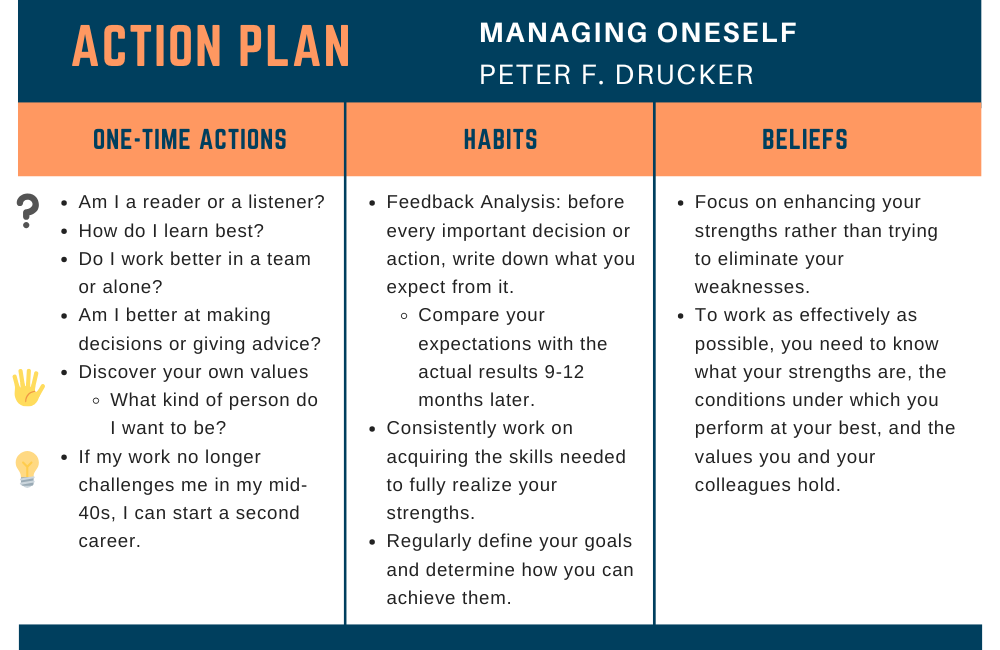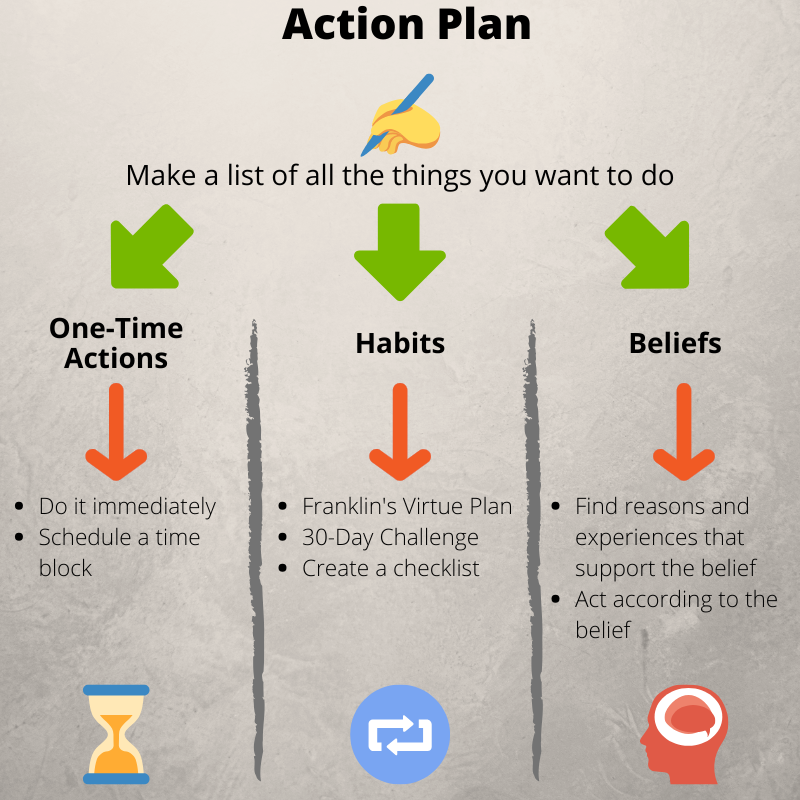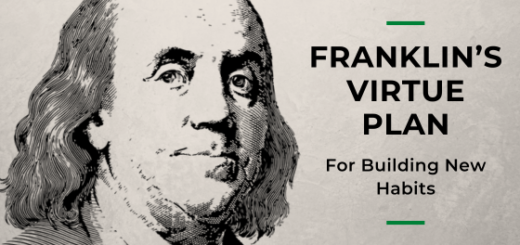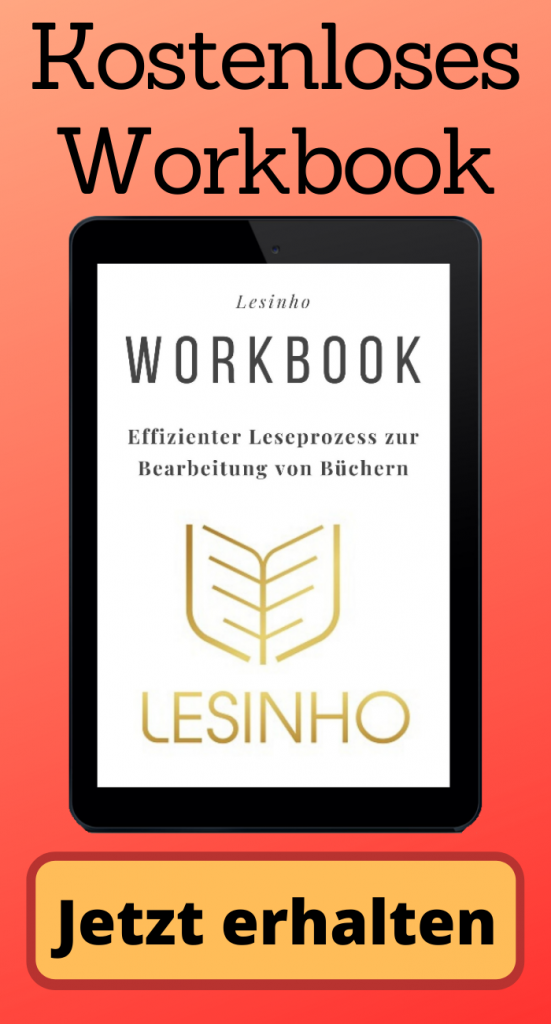The Ultimate Guide To Creating An Action Plan
Reading practical books only benefits you if you also apply what you’ve read. To simplify this process, create an action plan for each nonfiction book you read. In this plan, outline what you intend to implement from the book. Additionally, plan when and how you will carry out each action. This action plan helps bridge the gap between theory and practice.
When reading books, you’ll often come across:
- Ideas you’d like to try out
- Tasks that can help you progress
- Questions or statements you’d like to ponder
- Habits you want to practice regularly
- Beliefs you’d like to adopt
While reading, keep a notebook handy to jot down such items. You can also take notes directly in the book. Mark the relevant passage and use symbols in the text margin, such as:
- A lightbulb for ideas
- A hand for tasks
- A question mark for thought prompts
- A loop for habits
- A cross for beliefs
You can also use the top and bottom margins for brief notes. After finishing the book, review your notes and create a table listing everything you want to implement. Sort each item into one of the following three categories (with ideas, tasks, and thought prompts falling under one-time actions):
- One-Time Action
- Habit
- Belief

After creating the action plan, start implementing it by selecting an approach for one-time actions, habits, and beliefs:
One-Time Actions: Either complete these immediately or set a deadline. Add the task to your calendar or to-do list and schedule a daily or weekly block of time to complete each item on your list.
Habits: These are useful activities that you should practice regularly. To establish new habits, try using Franklin’s Virtue Plan or a 30-Day Challenge. For recurring processes, creating checklists can be beneficial so you can simply work through each step without overlooking anything. (Learn more about building new habits here)
Beliefs: Beliefs can be formed from statements, philosophies, or perspectives encountered in the book. To build a new belief, start by gathering as many reasons as possible to support why it’s beneficial to adopt this belief. Next, identify experiences and other beliefs that reinforce the new belief. This can include both your own experiences and those of others. Reading many biographies and novels can be helpful. If necessary, you can even invent useful experiences by envisioning realistic scenarios where the belief proves advantageous. It’s also important to immediately begin acting according to the new belief. (You can find more information about building beliefs here)






